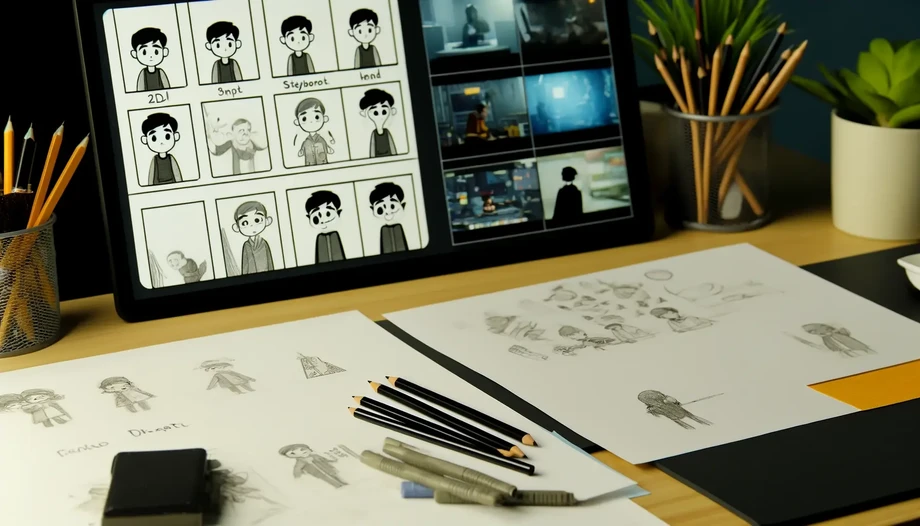Storyboarding is an essential step in the animation process, serving as a blueprint for both the narrative and technical aspects of a project. Whether it’s for a 2D or 3D animation, a well-crafted storyboard helps ensure that the final product is cohesive, visually appealing, and aligns with the creative vision. This article explores effective storyboarding techniques that are applicable to both 2D and 3D animations, highlighting how these methods facilitate the creation of dynamic and engaging storytelling.
Understanding Storyboarding
A storyboard is essentially a series of drawings that outline each shot of an animation and include details such as camera angles, timing, motion, and transitions. In both 2D and 3D projects, storyboards are crucial for visualizing complex scenes and sequences, allowing creators to experiment with changes before production begins. This visual planning helps save time and resources and enhances communication among team members.
Start with a Strong Script
The foundation of effective storyboarding begins with a strong script. The script should clearly outline the narrative, including dialogue and key actions. For both 2D and 3D animation services, understanding the script is crucial as it guides the storyboard artist in visualizing the scenes.
Leverage Thumbnail Sketches
Thumbnail sketches are small, quick drawings used to capture the composition and basic elements of each shot. These sketches are particularly useful in the early stages of both 2D and 3D storyboarding because they allow animators to explore various visual ideas without committing to detailed drawings. Thumbnails help in determining the pacing and flow of the animation.
Define Camera Angles and Movements
Camera angles and movements are pivotal in storytelling. Deciding on these elements early on can greatly influence the mood and understanding of a scene. In 2D animation services, this might mean clarifying pans, zooms, and static shots, whereas in 3D, the camera can move through an environment, offering a myriad of dynamic perspectives. Storyboards should annotate these movements to guide animators and cinematographers.
Incorporate Dialogue and Sound Cues
Sound dramatically enhances the impact of visual storytelling. Including dialogue and sound cues in your storyboard can help synchronize the visual elements with audio. This technique is crucial in both 2D and 3D animations, where timing can significantly affect the emotional resonance and clarity of the narrative.
Focus on Keyframes
Keyframes mark the most important movements and expressions in an animation sequence. In storyboarding, identifying these keyframes helps both 2D and 3D animators visualize the main actions and transitions that need emphasis. This approach not only streamlines the animation process but also ensures that critical moments are highlighted effectively.
Use Color Coding
Color coding can be used to differentiate between various elements such as background, foreground, character actions, and sound effects. This technique is helpful in both 2D and 3D storyboarding as it provides an at-a-glance overview of how various elements interact within a scene.
Feedback and Iteration
Storyboarding is not a one-time task but rather a dynamic process that involves multiple iterations. Feedback from directors, animators, and other stakeholders is crucial as it helps refine the storyboard. Regular reviews ensure that both 2D and 3D animations meet the project's objectives and align with the intended vision.
Conclusion
Effective storyboarding is fundamental in both 2D and 3D animation services. By applying these techniques, animators can create more organized and visually compelling animations. Remember, the quality of the storyboard directly influences the effectiveness of the final animation, making these techniques invaluable tools in the creation process. Whether you are dealing with traditional 2D animation services or complex 3D animation services, these storyboard techniques will help ensure that your project is a success from start to finish.

